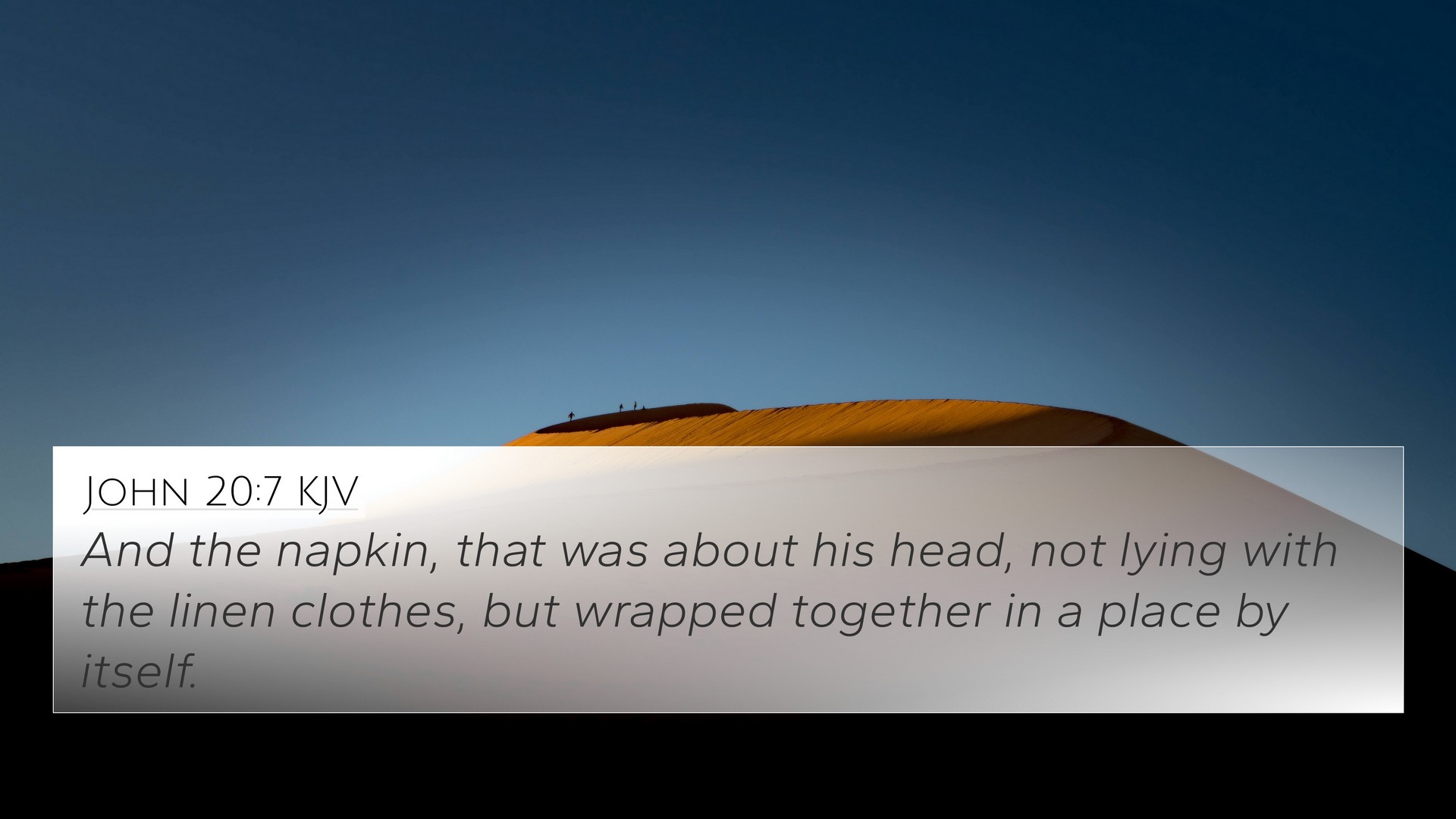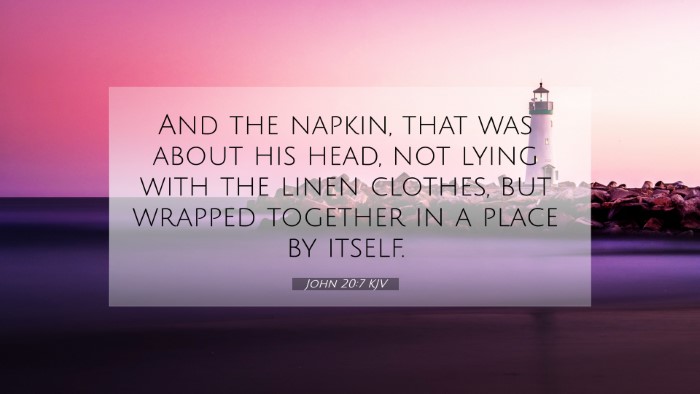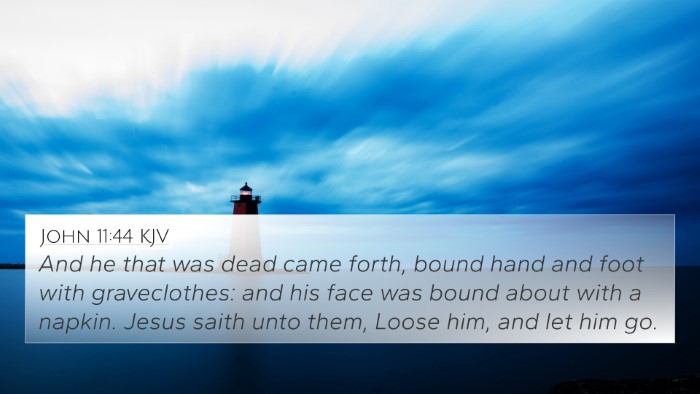Understanding John 20:7
John 20:7 states, "And the napkin, that was about his head, not lying with the linen clothes, but wrapped together in a place by itself." This verse occurs after the resurrection of Jesus and contains significant theological meaning, which can be explored through various public domain commentaries.
Significance of the Napkin
Matthew Henry's Commentary emphasizes that the napkin was intentionally placed apart from the linen clothes. This indicates the orderly manner of Jesus' resurrection, depicting that He did not just rise from the dead chaotically but did so with purpose and foresight. The very act of folding the napkin showcases His divine authority and control over death.
Adam Clarke's Commentary elaborates on the symbolism of the napkin. He points out that the fact it was wrapped neatly indicates a profound message of peace. It signifies that Jesus was no longer bound by death and that His resurrection was a peaceful transition rather than a tumultuous escape from the grave.
Albert Barnes' Notes mention the implications of the napkin's placement. It serves as a confirmation that Jesus had truly risen. The absence of disorder confirms the miracle of resurrection, reinforcing the faith of the disciples who would discover this evidence. It distinguishes Jesus' resurrection from ordinary resurrections, highlighting His divinity.
Bible Cross-References
Several Bible verses connect with John 20:7, creating a tapestry of meaning within scripture:
- John 11:44 - The resurrection of Lazarus, demonstrating God's power over death.
- Matthew 28:6 - The angel's message about the resurrection, affirming that Jesus has risen from the dead.
- Luke 24:2-3 - The discovery of the empty tomb and its importance.
- Mark 16:5-6 - The reaction of the women who came to the tomb and learned of Jesus' resurrection.
- Romans 6:9 - The assurance that Christ being raised from the dead will not die again.
- 1 Corinthians 15:55 - The victory over death captured in Paul's letters.
- Hebrews 1:3 - The majesty of the risen Christ as the sustainer of all things.
Thematic Connections
The themes presented in John 20:7 can be linked to broader Biblical concepts:
- Resurrection - This verse is foundational to the understanding of resurrection in Christian doctrine.
- Order and Peace - The act of folding the napkin reflects divine order, which contrasts with the chaos often surrounding death.
- Faith & Assurance - This moment provides evidence to the disciples, strengthening their faith in Jesus as the Messiah.
Tools for Cross-Referencing
For those looking to delve deeper into cross-referencing, several resources and methods can be utilized:
- Bible Concordance: A tool that lists words found in the Bible and their locations.
- Bible Cross-Reference Guide: This guide helps in identifying related verses across the scriptures.
- Bible Reference Resources: Use online databases and printed materials for a detailed study.
Conclusion
In conclusion, John 20:7 not only marks a critical moment in the resurrection narrative but also provides a rich ground for thematic exploration and cross-referencing. The orderly manner in which the burial cloths were arranged speaks volumes about Jesus' authority and the significant assurance of eternal life offered through Him.



